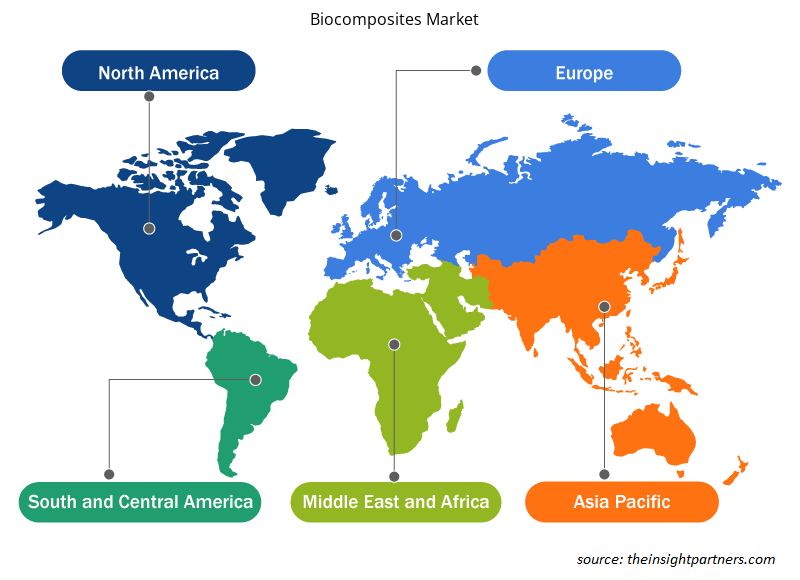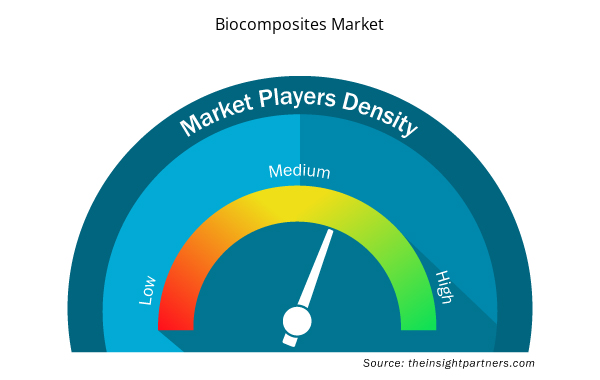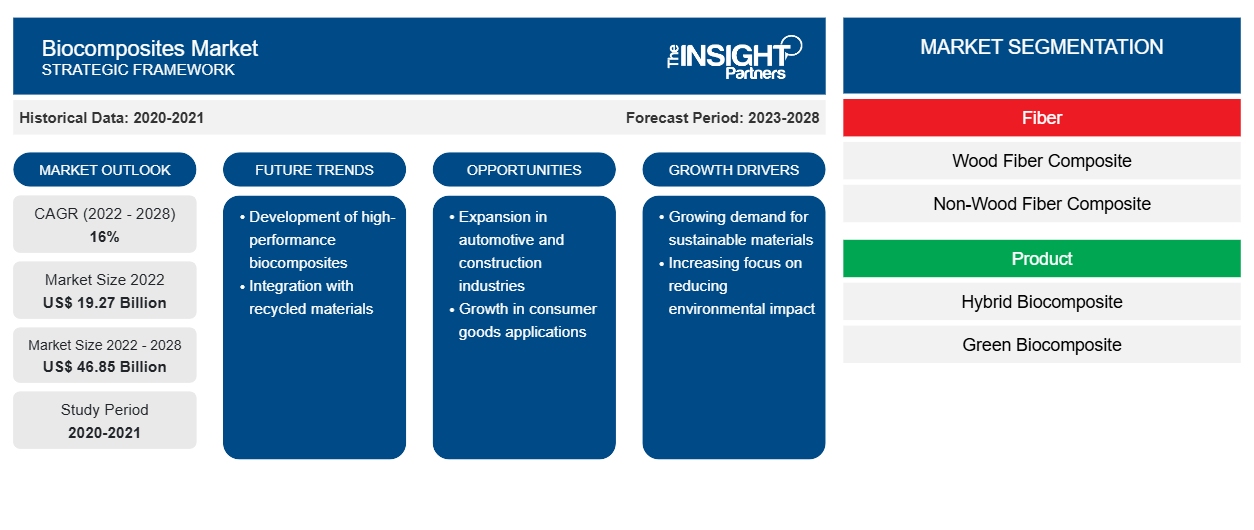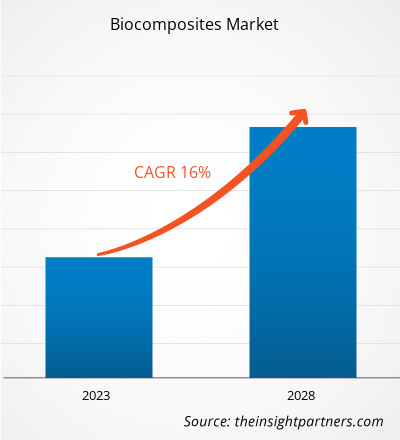[연구보고서] 바이오 복합소재 시장은 2022년 19,268.62백만 달러에서 2028년 46,851.39백만 달러로 성장할 것으로 예상되며, 2022년에서 2028년 사이에 연평균 성장률 16% 로 성장할 것으로 추산됩니다 .
시장 분석
바이오 복합소재 는 천연 섬유와 매트릭스(수지)를 강화하여 만든 재료입니다. 바이오 복합소재 에 대한 관심은 기초 연구, 포장, 건설, 군사 응용 분야, 항공 우주, 철도 차량 및 자동차의 응용 분야로서 최종 사용 산업에서 빠르게 증가하고 있습니다. 이는 가용성의 용이성, 높은 비강도, 경량, 생분해성, 재활용성 , 저렴한 비용 및 재생 가능성 과 같은 많은 잠재적인 이점으로 인해 그렇습니다 . 바이오 복합소재는 자동차 산업에서 내부 패널을 제조하는 데 많이 사용되고 있습니다. 바이오 복합소재는 친환경적 이기 때문에 다양한 응용 분야에서 고가로 폴리머 복합소재를 대체하고 있습니다.
성장 동인 및 과제
지속 가능한 건축 자재의 사용 증가는 바이오 복합재 시장 성장 에 도움이 되었습니다 . 건설 산업은 도시 지역의 인구 증가로 인해 급속한 도시화에서 가장 확고한 신생 부문 중 하나입니다. 이러한 도시화로 인해 이 산업은 대부분 재생 불가능한 자원에서 나오는 가장 놀라운 재료 소비자가 되었습니다. Global Alliance for Building and Construction의 보고서에 따르면 건설 부문은 환경에 가장 해로운 부문 중 하나입니다. 이 연구에 따르면 건설 부문은 환경에 분산된 이산화탄소 배출량의 39%, 전 세계 에너지 소비의 36%, 원자재 추출의 50%를 담당합니다. 배출은 주로 기후 변화의 원인이 되고 지구 온도를 상승시킵니다. 기존 건설 자재는 자원과 에너지를 매우 많이 사용합니다. 따라서 사회적, 환경적 영향을 모두 미치는 기존 건축 자재의 위험에 대한 우려와 인식이 높아지고 있습니다. 이러한 문제를 해결하기 위해 건설 산업에서 새로운 재료와 기술이 개발되고 있습니다. 바이오 복합재 는 지속 가능한 건축 자재로, 재생 불가능한 폐기물을 제거하고, 원자재 사용을 줄이며, 화석 연료 소비를 줄이는 데 도움이 됩니다. 건설 산업에서 바이오 복합재를 사용하는 데 대한 관심은 전 세계적으로 증가하고 있습니다. 이러한 재료는 재생 가능하고 재활용 가능하며 생분해성인 공급원에서 만들어지고 구조적 및 비구조적 건축 요소로 광범위하게 사용되기 때문입니다. 그러나 천연 섬유 복합재에는 섬유-매트릭스 계면 결합이 좋지 않고, 습윤성이 좋지 않으며, 물 흡수가 적은 등 단점이 거의 없습니다. 이러한 과제는 최종 제품의 강도와 성능에 영향을 미칩니다. 바이오 복합재 의 친수성은 주변 환경에서 물을 흡수하는 경향이 있어 복합재가 부풀어 오릅니다. 이러한 모든 요인이 예측 기간 동안 바이오 복합재 시장 성장을 방해할 것으로 예상됩니다 .
귀하의 요구 사항에 맞게 이 보고서를 사용자 정의하세요
이 보고서의 일부 또는 국가 수준 분석, Excel 데이터 팩을 포함하여 모든 보고서에 대한 사용자 정의를 무료로 받을 수 있으며 신생 기업 및 대학을 위한 훌륭한 혜택과 할인 혜택을 이용할 수 있습니다.
- 이 보고서의 주요 시장 동향을 알아보세요.이 무료 샘플에는 시장 동향부터 추정 및 예측까지 다양한 데이터 분석이 포함됩니다.
보고서 세분화 및 범위
"2028년까지의 글로벌 바이오 복합소재 시장 분석"은 글로벌 바이오 복합소재 시장 동향과 성장 기회 에 중점을 둔 전문적이고 심층적인 연구입니다 . 이 보고서는 섬유, 제품, 최종 용도 및 지역별로 자세한 시장 세분화를 통해 글로벌 바이오 복합소재 시장에 대한 개요를 제공하는 것을 목표로 합니다. 글로벌 바이오 복합소재 시장은 최근 몇 년 동안 높은 성장을 목격해 왔으며 예측 기간 동안 이러한 추세가 지속될 것으로 예상됩니다. 이 보고서는 주요 지역 및 국가에서의 수요와 함께 전 세계 바이오 복합소재 소비에 대한 주요 통계를 제공합니다. 또한 이 보고서는 주요 지역 및 국가에서 바이오 복합소재 시장 성과에 영향을 미치는 다양한 요인에 대한 정성적 평가를 제공합니다. 이 보고서는 또한 바이오 복합소재 시장 의 선도적 기업 과 그들의 주요 전략적 개발에 대한 포괄적인 분석을 포함합니다. 시장 역학에 대한 여러 분석도 포함되어 주요 원동력 요인, 시장 동향 및 수익성 있는 바이오 복합소재 시장 기회를 파악하는 데 도움이 되며, 이는 차례로 주요 수익 포켓을 파악하는 데 도움이 됩니다.
또한, 생태계 분석과 포터의 5가지 힘 분석은 글로벌 생체 복합재 시장에 대한 다각적인 관점을 제공하며, 이는 전체 공급망과 시장 성장에 영향을 미치는 다양한 요소를 이해하는 데 도움이 됩니다.
세그먼트 분석
글로벌 바이오 복합재 시장은 섬유, 제품, 최종 용도에 따라 세분화됩니다. 섬유를 기준으로 바이오 복합재 시장은 목재 섬유 복합재와 비목재 섬유 복합재로 나뉩니다. 제품을 기준으로 시장은 하이브리드 바이오 복합재와 친환경 바이오 복합재로 분류됩니다. 최종 용도를 기준으로 시장은 건축 및 건설, 자동차, 소비재 및 기타로 구분됩니다.
섬유를 기준으로 목재 섬유 복합재 부문은 상당한 바이오 복합재 시장 점유율을 차지했습니다. 목재 섬유 복합재의 주요 단점은 습기에 대한 민감성이지만, 연구 개발이 증가함에 따라 제조업체는 더 높은 습기 저항성, 더 큰 강성 및 더 낮은 열 팽창 계수를 가진 목재 섬유 구성 요소를 생산하고 있습니다. 제품 기준으로 하이브리드 복합재는 가장 큰 시장 점유율로 바이오 복합재 시장을 이끌었습니다. 최종 용도 기준으로 건물 및 건설 부문은 바이오 복합재 시장을 지배하고 있습니다. 건물의 바이오 복합재는 골조, 벽 및 벽판, 창틀, 문, 바닥, 장식 패널, 큐비클 벽 및 천장 패널에 사용됩니다. 임시 및 조정 가능한 건물 구성 요소에 바이오 복합재를 사용하면 구조물 내의 내부 디자인을 수정할 때 매립지 폐기물이 줄어듭니다.
지역 분석
이 보고서는 북미, 유럽, 아시아 태평양(APAC), 중동 및 아프리카(MEA), 남미 및 중미 등 5개 주요 지역에 대한 글로벌 바이오 복합재 시장에 대한 자세한 개요를 제공합니다. 아시아 태평양은 시장에서 상당한 점유율을 차지했으며 2022년에는 93억 달러 이상으로 평가되었습니다. 아시아 태평양은 중국, 인도, 일본, 한국, 호주와 같은 여러 개발도상국과 선진 경제로 구성되어 있습니다. 성장에 기여하는 중요한 요인은 최종 사용 산업에 대한 건설 및 운송 수요 증가입니다. 바이오 복합재에 대한 높은 수요는 주로 중국, 일본, 인도, 한국에서 관찰됩니다. 또한 운송 및 인프라 부문에 대한 외국인 직접 투자(FDI)의 증가는 향후 몇 년 동안 바이오 복합재 수요를 견인할 것으로 예상됩니다. 유럽은 인프라 건설에 대한 정부 지출 증가로 인해 2028년에 약 11,000백만 달러에 달하는 상당한 성장을 목격할 것으로 예상됩니다. 또한 북미에서는 주거 및 상업 건설, 소비자 제품 및 자동차 부문에서 바이오 복합재가 널리 사용되고 있습니다. 이는 바이오 복합재 시장에서 수익성 있는 기회를 창출했습니다. 북미의 바이오 복합재 시장은 예측 기간 동안 15.0%의 CAGR로 성장할 것으로 확대되었습니다.
산업 발전 및 미래 기회
글로벌 바이오 복합재 시장에서 활동하는 업체들은 파트너십, 인수, 신제품 출시를 주요 전략으로 삼았습니다.
- 2022년 5월, Arkema는 재활용 가능하고 효율성이 더욱 향상된 복합소재를 위한 새로운 솔루션을 출시할 계획입니다.
- 2021년 3월, Fiberon은 고성능, 저유지보수 소재의 내구성과 결합된 목재의 탁월한 아름다움과 따뜻함을 제공하는 야생목 복합 클래딩 출시를 발표했습니다.
바이오 복합재 시장 지역 통찰력
Insight Partners의 분석가들은 예측 기간 동안 바이오 복합재 시장에 영향을 미치는 지역적 추세와 요인을 철저히 설명했습니다. 이 섹션에서는 북미, 유럽, 아시아 태평양, 중동 및 아프리카, 남미 및 중미의 바이오 복합재 시장 세그먼트와 지리에 대해서도 설명합니다.

- 바이오 복합재 시장에 대한 지역별 특정 데이터 얻기
바이오 복합재 시장 보고서 범위
| 보고서 속성 | 세부 |
|---|---|
| 2022년 시장 규모 | 192억 7천만 달러 |
| 2028년까지 시장 규모 | 468억 5천만 달러 |
| 글로벌 CAGR (2022-2028) | 16% |
| 역사적 데이터 | 2020-2021 |
| 예측 기간 | 2023-2028 |
| 다루는 세그먼트 | 섬유로
|
| 포함된 지역 및 국가 | 북아메리카
|
| 시장 선도 기업 및 주요 회사 프로필 |
|
시장 참여자 밀도: 비즈니스 역학에 미치는 영향 이해
바이오 복합재 시장 시장은 소비자 선호도의 변화, 기술 발전, 제품의 이점에 대한 인식 증가와 같은 요인으로 인해 최종 사용자 수요가 증가함에 따라 빠르게 성장하고 있습니다. 수요가 증가함에 따라 기업은 제품을 확장하고, 소비자의 요구를 충족하기 위해 혁신하고, 새로운 트렌드를 활용하여 시장 성장을 더욱 촉진하고 있습니다.
시장 참여자 밀도는 특정 시장이나 산업 내에서 운영되는 회사나 기업의 분포를 말합니다. 주어진 시장 공간에 얼마나 많은 경쟁자(시장 참여자)가 존재하는지 그 규모나 전체 시장 가치에 비해 나타냅니다.
생체 복합재 시장에서 운영되는 주요 회사는 다음과 같습니다.
- TTS
- 링그로브
- 비컴프 유한회사
- 유피엠(UPM)
- 플렉스폼 테크놀로지스
면책 조항 : 위에 나열된 회사는 어떤 특별한 순서에 따라 순위가 매겨지지 않았습니다.

- 바이오 복합재 시장 주요 주요 업체 개요를 알아보세요
코로나의 영향/지정학적 시나리오의 영향/경기 침체의 영향
COVID-19 팬데믹으로 인한 봉쇄, 여행 제한 및 사업 중단은 북미, 유럽, 아시아 태평양(APAC), 남미 및 중미, 중동 및 아프리카(MEA)의 다양한 국가의 경제와 산업에 부정적인 영향을 미쳤습니다. 이 위기는 글로벌 공급망, 제조 활동, 납품 일정, 필수 및 비필수 제품 판매를 교란했습니다. 다양한 회사에서 2020년에 제품 납품이 지연되고 향후 제품 판매가 침체될 가능성이 있다고 발표했습니다. 또한 유럽, 아시아 태평양 및 북미의 다양한 정부가 부과한 국제 여행 금지 조치로 인해 여러 회사가 협업 및 파트너십 계획을 중단해야 했습니다. 이러한 모든 요인이 2020년과 2021년 초에 화학 및 재료 산업을 방해하여 바이오 복합재 시장을 포함하여 이 산업과 관련된 다양한 시장의 성장을 제한했습니다.
COVID-19가 발생하기 전에 바이오 복합재 시장은 주로 자동차 및 건설 산업의 수요 증가에 의해 주도되었습니다. 그러나 2020년에는 국가 및 국제적 경계가 폐쇄되어 가치 사슬이 중단되어 다양한 산업이 운영 속도를 늦춰야 했습니다. COVID-19 팬데믹은 다양한 국가의 정부 당국이 부과한 제한으로 인해 주요 원자재의 공급망이 중단되고 제조 공정이 방해를 받았습니다. 그러나 경제는 운영을 회복했습니다. 이전에 연기되었던 건설 프로젝트가 재개되어 바이오 복합재 시장 참여자가 정상을 회복할 수 있는 기회가 더욱 제공되었습니다.
경쟁 환경 및 주요 회사
생체 복합재 시장의 주요 기업으로는 TTS, Lingrove, Bcomp Ltd, UPM, Flexform Technologies, Tecnaro GmbH, Fiberon, Arkema, Trex Company, Inc., HempFlax Group BV 등이 있습니다.
- 역사적 분석(2년), 기준 연도, CAGR을 포함한 예측(7년)
- PEST 및 SWOT 분석
- 시장 규모 가치/양 - 글로벌, 지역, 국가
- 산업 및 경쟁 환경
- Excel 데이터 세트


- Energy Recovery Ventilator Market
- Intraoperative Neuromonitoring Market
- Power Bank Market
- Human Microbiome Market
- Rugged Servers Market
- Medical Enzyme Technology Market
- Artwork Management Software Market
- Electronic Toll Collection System Market
- Clinical Trial Supplies Market
- Fixed-Base Operator Market

Report Coverage
Revenue forecast, Company Analysis, Industry landscape, Growth factors, and Trends

Segment Covered
This text is related
to segments covered.

Regional Scope
North America, Europe, Asia Pacific, Middle East & Africa, South & Central America

Country Scope
This text is related
to country scope.
자주 묻는 질문
The green biocomposite is expected to be the fastest-growing segment during the forecast period. Green biocomposites are typically made by combining a biodegradable polymeric matrix with eco-friendly and renewable fibers. Increasing concern for the environment is driving the growth of green biocomposites during the forecast period.
During the forecast period, the automotive segment is expected to be the fastest-growing segment. Many automotive applications use biocomposites to achieve objectives, including light vehicle weight, fuel economy, low battery weight, low CO2 emissions, and high accident safety. Increasing demand for lightweight and fuel-efficient vehicles is propelling the demand for biocomposites during the forecast period.
The key driver fueling the biocomposites market's expansion is the population's increased awareness of the necessity for eco-friendly materials to protect the environment from degradation. Another aspect driving the biocomposites market's expansion is the growing use of biocomposites to lighten vehicles and increase safety. Other reasons that contributed to the market's growth include the introduction of strict government restrictions and safer usage of biocomposites than glass fiber.
In 2021, Asia-Pacific accounted for the largest share of the global biocomposites market. Due to growing environmental concerns, strict government restrictions, and a sense of social responsibility, the commercial and residential construction sector in the Asia Pacific is booming. Increased use of biocomposites in the building and construction sector led to the dominance of the Asia Pacific region in the global biocomposites market.
In 2021, the wood fiber composite segment held the largest market share. Composites made of wood fiber cost less than non-wood composites. These are used in a variety of applications, including residential, commercial, swimming pool, observation decks, and jetties. These are a few of the factors that led to the dominance of wood fiber composites in 2021.
The major players operating in the biocomposites market are TTS, Lingrove, Bcomp Ltd., UPM, Flexform Technologies, Tecnaro GMBH, Green Bay Decking, Fiberon LLC, Arkema, and Procotex.
Trends and growth analysis reports related to Chemicals and Materials : READ MORE..
The List of Companies - Biocomposites Market
- TTS
- Lingrove
- Bcomp Ltd
- UPM
- Flexform Technologies
- Tecnaro GMBH
- Green Bay Decking
- Fiberon LLC
- Arkema
- Procotex
The Insight Partners performs research in 4 major stages: Data Collection & Secondary Research, Primary Research, Data Analysis and Data Triangulation & Final Review.
- Data Collection and Secondary Research:
As a market research and consulting firm operating from a decade, we have published and advised several client across the globe. First step for any study will start with an assessment of currently available data and insights from existing reports. Further, historical and current market information is collected from Investor Presentations, Annual Reports, SEC Filings, etc., and other information related to company’s performance and market positioning are gathered from Paid Databases (Factiva, Hoovers, and Reuters) and various other publications available in public domain.
Several associations trade associates, technical forums, institutes, societies and organization are accessed to gain technical as well as market related insights through their publications such as research papers, blogs and press releases related to the studies are referred to get cues about the market. Further, white papers, journals, magazines, and other news articles published in last 3 years are scrutinized and analyzed to understand the current market trends.
- Primary Research:
The primarily interview analysis comprise of data obtained from industry participants interview and answers to survey questions gathered by in-house primary team.
For primary research, interviews are conducted with industry experts/CEOs/Marketing Managers/VPs/Subject Matter Experts from both demand and supply side to get a 360-degree view of the market. The primary team conducts several interviews based on the complexity of the markets to understand the various market trends and dynamics which makes research more credible and precise.
A typical research interview fulfils the following functions:
- Provides first-hand information on the market size, market trends, growth trends, competitive landscape, and outlook
- Validates and strengthens in-house secondary research findings
- Develops the analysis team’s expertise and market understanding
Primary research involves email interactions and telephone interviews for each market, category, segment, and sub-segment across geographies. The participants who typically take part in such a process include, but are not limited to:
- Industry participants: VPs, business development managers, market intelligence managers and national sales managers
- Outside experts: Valuation experts, research analysts and key opinion leaders specializing in the electronics and semiconductor industry.
Below is the breakup of our primary respondents by company, designation, and region:

Once we receive the confirmation from primary research sources or primary respondents, we finalize the base year market estimation and forecast the data as per the macroeconomic and microeconomic factors assessed during data collection.
- Data Analysis:
Once data is validated through both secondary as well as primary respondents, we finalize the market estimations by hypothesis formulation and factor analysis at regional and country level.
- Macro-Economic Factor Analysis:
We analyse macroeconomic indicators such the gross domestic product (GDP), increase in the demand for goods and services across industries, technological advancement, regional economic growth, governmental policies, the influence of COVID-19, PEST analysis, and other aspects. This analysis aids in setting benchmarks for various nations/regions and approximating market splits. Additionally, the general trend of the aforementioned components aid in determining the market's development possibilities.
- Country Level Data:
Various factors that are especially aligned to the country are taken into account to determine the market size for a certain area and country, including the presence of vendors, such as headquarters and offices, the country's GDP, demand patterns, and industry growth. To comprehend the market dynamics for the nation, a number of growth variables, inhibitors, application areas, and current market trends are researched. The aforementioned elements aid in determining the country's overall market's growth potential.
- Company Profile:
The “Table of Contents” is formulated by listing and analyzing more than 25 - 30 companies operating in the market ecosystem across geographies. However, we profile only 10 companies as a standard practice in our syndicate reports. These 10 companies comprise leading, emerging, and regional players. Nonetheless, our analysis is not restricted to the 10 listed companies, we also analyze other companies present in the market to develop a holistic view and understand the prevailing trends. The “Company Profiles” section in the report covers key facts, business description, products & services, financial information, SWOT analysis, and key developments. The financial information presented is extracted from the annual reports and official documents of the publicly listed companies. Upon collecting the information for the sections of respective companies, we verify them via various primary sources and then compile the data in respective company profiles. The company level information helps us in deriving the base number as well as in forecasting the market size.
- Developing Base Number:
Aggregation of sales statistics (2020-2022) and macro-economic factor, and other secondary and primary research insights are utilized to arrive at base number and related market shares for 2022. The data gaps are identified in this step and relevant market data is analyzed, collected from paid primary interviews or databases. On finalizing the base year market size, forecasts are developed on the basis of macro-economic, industry and market growth factors and company level analysis.
- Data Triangulation and Final Review:
The market findings and base year market size calculations are validated from supply as well as demand side. Demand side validations are based on macro-economic factor analysis and benchmarks for respective regions and countries. In case of supply side validations, revenues of major companies are estimated (in case not available) based on industry benchmark, approximate number of employees, product portfolio, and primary interviews revenues are gathered. Further revenue from target product/service segment is assessed to avoid overshooting of market statistics. In case of heavy deviations between supply and demand side values, all thes steps are repeated to achieve synchronization.
We follow an iterative model, wherein we share our research findings with Subject Matter Experts (SME’s) and Key Opinion Leaders (KOLs) until consensus view of the market is not formulated – this model negates any drastic deviation in the opinions of experts. Only validated and universally acceptable research findings are quoted in our reports.
We have important check points that we use to validate our research findings – which we call – data triangulation, where we validate the information, we generate from secondary sources with primary interviews and then we re-validate with our internal data bases and Subject matter experts. This comprehensive model enables us to deliver high quality, reliable data in shortest possible time.


 이 보고서에 대한 무료 샘플을 받으세요
이 보고서에 대한 무료 샘플을 받으세요